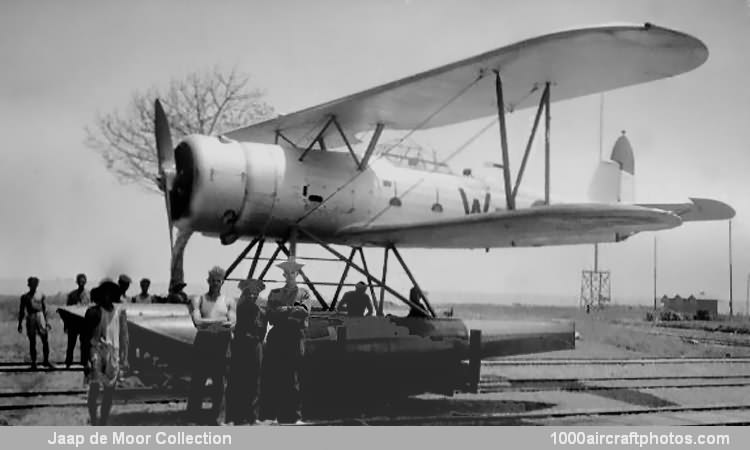10/31/2010. Remarks by Johan Visschedijk: "Intended for naval operation from shore bases or from ships of the RNethN, the C.XI-W was designed in 1934 as a two-seat reconnaissance twin-floatplane and, despite the fact that only one Dutch naval vessel, the cruiser Hr.Ms. 'De Ruyter', was fitted with a catapult, it was stressed for catapult launching.
The C.XI-W employed a typical Fokker structure, the wings having two wooden spars with plywood ribs and fabric covering, and the fuselage being of fabric covered welded steel tube. The single-step floats were of duralumin and Alclad, these being mounted on a steel tube chassis welded to the fuselage.
Alternative power plants were the Wright Cyclone SR-1820-F-52 and the Bristol Pegasus III, both nine-cylinder air-cooled radial engines rated at 775 hp. Armament consisted of two 0.311 in (7.9 mm) FN-Browning machine guns, one fixed forward-firing and the other on a moveable mount in observer's cockpit.
The prototype, initially registered PH-ALC, was flown for the first time on July 20, 1935, with the Wright Cyclone engine, and was later flown to Bremerhaven for catapult trials. After some modifications, including some redesign of the floats, rearrangement of the chassis bracing and the partial enclosure of the tandem cockpits by a sliding canopy, the C.XI-W was accepted by the MLD, and thirteen additional machines were ordered, these entering service in 1938, the majority of them being dispatched to the Netherlands East Indies.
The last production C.XI-W (W-14) was still in the Netherlands at the time of the German invasion and was flown to the United Kingdom on May 22, 1940, subsequently being crated and sent to the Netherlands East Indies. After the Dutch declaration of war on Japan, eight C.XI-Ws were operational in the East Indies. They were used extensively for reconnaissance but none survived the Japanese invasion of Java."
Jaap de Moor adds: "Pictured in front of the aircraft, tall, and wearing the Navy-issue inverted hat is my father."
